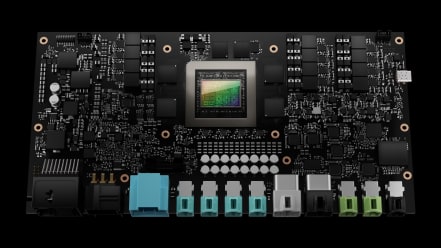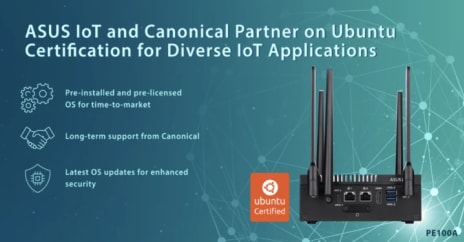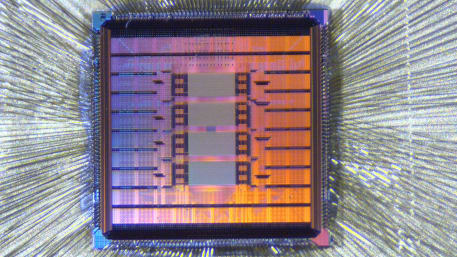The State of IoT – September 2022
Edoardo Barbieri
on 7 October 2022
Tags: Embedded , IoT , stateofiot
Welcome to the September edition of the monthly State of IoT series.
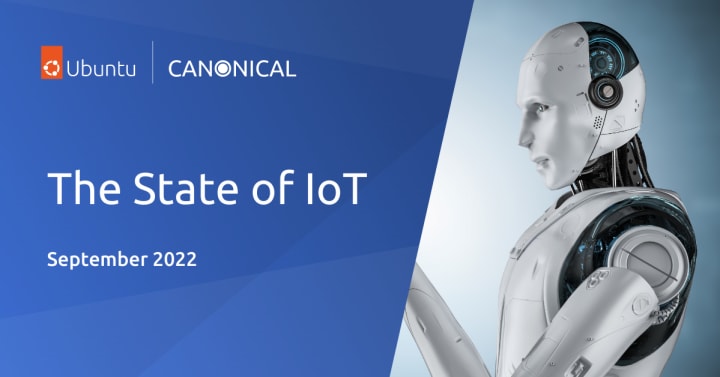
Smart homes, automotive and RISC-V took the headlines, with several announcements and press releases in each industry. Without further ado, let’s dive straight into the most prominent news across the IoT landscape from the last month.
RISC-V to define the future of software-defined vehicles
Automotive manufacturers and suppliers are accelerating the move toward software-defined connected vehicles, with increased demands on the computing platform. From entertainment and driver assistance to autonomous driving, software provides unmatched benefits across the value chain when integrated into vehicles. Over the past years, rapid improvements in vehicle electrification and autonomous driving significantly shifted the concerns faced by the automotive industry from mechanical to electronic and software-related challenges.
Open-source software and RISC-V, the new paradigm for open-source hardware, are fueling innovation in the automotive industry. RISC-V is a free and open Instruction Set Architecture (ISA), holding the promise of increasingly rapid processor innovation through open standard collaboration.
SiFive, the pioneer leading the RISC-V revolution, is now expanding its automotive offering with the new SiFive Automotive E6-A, X280-A, and S7-A solutions for applications ranging from infotainment and connectivity to ADAS, and electrification. With their latest announcement, SiFive is creating a complete lineup of computing IP for MCUs, MPUs, high-performance SoCs, and vector processing solutions tailored for automotive applications.
NVIDIA unveils chipset for autonomous vehicles
As OEMs navigate the shift toward software-defined vehicles, NVIDIA aims to position itself at the forefront of the next generation of autonomous vehicle computing. At the GTC 2022 Keynote, NVIDIA revealed DRIVE Thor, a unifying superchip targeting automakers’ 2025 models.
Software-defined vehicles are examples of multi-domain computing. Electronic Control Units (ECUs) execute various functions, from autonomous driving workloads to in-vehicle infotainment. ECUs were traditionally all over the vehicle, close to the relevant sensors and actuators. On the other hand, DRIVE Thor aims to unify the previously disparate functions across ECUs into a single architecture for greater efficiency and increased overall equipment effectiveness.
Besides consolidating multi-domain computing into a single, powerful SoC, DRIVE Thor brings functional safety into sharp focus. Automotive SoCs and ECUs must satisfy rigorous safety requirements before being integrated into a manufacturer’s vehicle. For instance, the ISO 26262 standard defines an Automotive Safety Integrity Level (ASIL) to map requirements and processes to the system criticality. According to that vision, DRIVE Thor is designed to be ASIL D functionally safe.
The superchip won’t hit production until 2025 but is already drawing lots of attention from OEMs and analysts as a step change in automotive performance and safety.
Ubuntu certified on ASUS IoT hardware
ASUS IoT is a provider of embedded systems and AIoT hardware solutions. Notable among those is their PE100A device, an edge computer featuring an i.MX 8M scalable SoC processor for low power consumption. The PE100A is the first NXP i.MX8 Canonical certification for Ubuntu Core 20 and Ubuntu Server 20.04.
As a result of the cooperation between ASUS IoT and Canonical, individual hardware I/O functions on the PE100A will conform to industrial-grade standards, shortening the time to market for device manufacturers. By collaborating with ASUS IoT, Canonical strives to deliver the most streamlined Linux experience, providing long-term security and reliability for embedded developers.
Amazon introduces the latest smart homes devices
Amazon took another step to bring the future of smart homes forward. At Amazon’s 2022 Devices & Services Event, the e-commerce giant broadened its portfolio of consumer devices for ambient intelligence by introducing new e-readers, smart speakers and sleep trackers.
In the smart speaker category, Amazon revealed the 5th generation of its Echo Dot product line. Featuring an eight-core processor and support for Wi-Fi 6E, the device will connect to Alexa in the cloud. The company further introduced Halo Rise, touted as the only product combining a contactless sleep tracking solution with a wake light and environmental data. Amazon stated Halo Rise ships with built-in AI/ML capabilities to provide highly accurate insights and personalised sleep analysis.
As Amazon keeps boosting its home technology portfolio just a few weeks after acquiring iRobot, what role other players will have in shaping the future of an open, interconnected smart home remains to be seen.
Google and insurers target smart homes
Insurance companies have been eyeing the rapidly-growing world of IoT for several years. Getting into other verticals like automotive has been relatively straightforward via per-mileage pricing for cars. For instance, insurers can charge people based on how many miles they drive by consuming real-time data from sensors. Insurance in more privacy-sensitive verticals like smart homes, however, is trickier, as those firms don’t directly own monitoring devices and tracking people’s daily moves is a delicate topic.
Partnerships with device vendors are a sensible approach, and insurance providers like State Farm have been going down that route. State Farm, one of the most well-known insurers in North America, will make a $1.2 billion equity investment in ADT, a leading provider of security, automation, and smart home solutions. ADT and State Farm stated they aim to combine next-generation security, innovative smart home technology and reimagined risk-mitigation capabilities to monitor, detect, prevent and optimise against homeownership risks.
The two companies envision new ways for homeowners to reduce costs through safer discounts by leveraging their combined experience in monitoring home security and insurance expertise. The announcement will build upon ADT’s existing relationship with Google, which already invested $450 million two years ago. The partnership for improved home security resulted in ADT installing and selling Google Nest devices and the tech giant acquiring a 6.6% ownership in ADT. Following ADT’s partnership with State Farm, Google is committing another $150 million toward product development and employee training.
Overall, Google, ADT, and State Farm aim to use data from Google’s Nest hardware sold by ADT to inform insurance policies in the smart home. Privacy concerns aside, the combined work of smart home solution providers, tech giants and insurance firms has the potential to deliver a safer home ownership experience.
Matter out of the box on Ubuntu Core
Matter is the royalty-free connectivity standard making great strides in staking a claim in what has so far appeared to be a melting pot of incompatible devices. Matter, formerly Project Connected Home over IP, or Project CHIP, is essentially an IPv6-based connectivity standard defining the application layer deployed on devices and MCUs with support for Wi-Fi, Thread and Bluetooth Low Energy (BLE). Although the Matter specification is proprietary, i.e. licensed by the Connectivity Standards Alliance (CSA), formerly Zigbee Alliance, the code is open-source.
Historically, the smart home industry has suffered from a lack of standards, resulting in vendor lock-in and fragmentation. The Matter standard aims to increase interoperability and accessibility. This month Canonical announced the intention to support the upcoming standard.
The aim is to make Ubuntu Core the quickest and most reliable way to bring a Matter device to market. Furthermore, Canonical joined the CSA as a participant member to help develop open standards for the IoT and advocate for the role of open-source software in this domain.
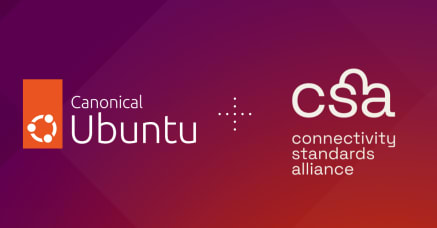
Amazon expands its robotics portfolio for warehouses
Amazon keeps expanding its robotics division by acquiring machinery maker Cloostermans. Based in Belgium, Cloostermans expertise ranges from electrical hardware engineering to software programming for PLC controls, servo motion and HMI operator interfaces. This September the e-commerce giant stated they aim to build next-generation supply chain mechatronics by leveraging Cloostermans’s deep experience in engineering, machinery, and robotics.
The latest announcement follows the earlier merger agreement under which Amazon acquired iRobot, the makers of the Roomba vacuum. Whether for warehouses or smart homes, with the acquisition of Cloostermans, Amazon continues investing in state-of-the-art robotics.
NVIDIA reveals edge-computing platform with Ubuntu
Organisations are extending to the edge, pushing workloads closer to where users and embedded systems live. This month NVIDIA announced its latest edge-AI computing platform, charting the course for customers to navigate the shift to the edge.
NVIDIA IGX redefines industrial computing by delivering proactive safety in regulated environments. Designed for industrial and medical certifications, IGX will meet the enterprise-grade demands of high-performance systems at the edge.
Nvidia is working with operating system vendors like Canonical to bring full-stack, long-term support to IGX. As factories strive for increased efficiency and effectiveness, Orin IGX and Ubuntu provide the perfect combination of high performance, built-in functional safety, end-to-end security and long-term support. By delivering proactive safety in healthcare and industry, teams can reduce downtime and increase asset utilisation by predicting machine failures.
NTT and VMWare bring 5G at the edge
As device manufacturers expect to run workloads closer to where devices produce and consume data, market leaders are navigating the shift to the edge.
Three of the most salient players, NTT, VMware and Intel, aim to chart the course and recently partnered to develop a managed edge and private 5G services.
NTT launched the first globally available Private 5G Network-as-a-Service platform in August last year. Similarly, VMware first unveiled its Edge Compute Stack offering, a virtual machine and container-based stack tailored to apps at the edge, at VMworld 2021. Now, the companies will integrate their technologies to offer a fully managed Edge+Private 5G offering running on silicon from Intel. NTT announced the offering at VMWare Explore and will deliver the new Edge-as-a-Service to provide near-zero latency, maximum processing power, and global coverage for edge workloads.
With a managed edge computing platform enabling enterprises to deploy and monitor applications closer to the edge, we are one step closer to tapping into the revolution brought by the advent of tightly embedded edge devices and pervasive connectivity.
NASA sends RISC-V to space
NASA’s High-Performance Space Computing (HPSC) project aims to develop flight computing technology capable of providing 100x the computational capacity of current spaceflight computers. As part of the HPSC project, in 2021, NASA invited qualified vendors to submit proposals on advanced radiation-hardened computing chip technology.
A year later, the Jet Propulsion Laboratory at NASA announced they selected Microchip to architect, design, and deliver the HPSC processor for future lunar and planetary exploration missions under a $50 million contract over the next three years. The next-generation mission-critical compute processor will redefine what is possible for the future of robust autonomous space missions. Furthermore, its use cases are not limited to space exploration but include systems for the aerospace and defence industry and the broader commercial mass market of edge-critical compute applications.
Who will provide the core CPU and demonstrate drastically improved performance gains over competing processor technology? The answer is, again, SiFive. This month SiFive revealed an Intelligence X280 RISC-V vector core that will power the HPSC to deliver 100x the computational capability of today’s space computers. According to SiFive, the multi-core X280 1 demonstrated several orders of magnitude improvements compared to competitive CPU solutions powering today’s space computers. RISC‑V has seen rapid industry-wide adoption so far. Going beyond the Earth is a strong indicator that the free and open ISA has the potential to be the new compute standard of the future.
RISC-V expands its footprint among microcontrollers
Cortus, a French fabless semiconductor company, is offering RISC-V-based microcontrollers. Cortus is an ASIC/SoC design company providing IC devices from a simple MCU to a multi-core SoC, with expertise in toolchains, embedded software and architecture.
The company is attempting to position itself as a RISC-V leader, offering solutions across the entire compute spectrum. They recently announced the launch of their new, secure low-power RISC-V microcontrollers.
As more silicon vendors provide low-power and constrained chips using RISC-V, the free and open ISA could become a serious competitor to Arm M-class silicon in the microcontroller market.
Open-source chips for R&D
University researchers and small start-ups struggle to innovate and test new ideas with semiconductors and nanodevices. Developing and building a new chip usually requires large cash infusions to get to production, preventing researchers from accessing the necessary technology for innovative breakthroughs.
Things may be changing, as the U.S. Department of Commerce’s National Institute of Standards and Technology (NIST) and Google recently teamed up to create open-source computer chips for research and development. The effort strives to improve access to semiconductor technology for American academics and small business researchers by removing the usual restriction and licensing fees involved with foundry resources. SkyWater Technology will manufacture the chips at its semiconductor foundry in Minnesota, with Google covering the upfront costs and funding the initial production runs.
The agreement follows the recent CHIPS Act, passed by the US Congress to strengthen US silicon manufacturing by providing ~$52 billion in subsidies and incentives to build manufacturing plants. Moving to an open-source framework will further contribute to developing an affordable domestic supply of silicon, helping the US establish itself further in the space.
Stay tuned for more IoT news
We will soon be back with next month’s summary of IoT news. Meanwhile, join the conversation on IoT Discourse to discuss everything related to IoT and tightly connected, embedded devices.
Further reading
Why is Linux the OS of choice for IoT devices? Find out with the official guide to Linux for embedded applications.
Choosing a distribution for your IoT device: Yocto or Ubuntu Core? Learn about the trade-offs between a community-maintained built system and a commercial-grade distribution in our webinar.
Discover how open standards and interfaces are accelerating the world’s move towards Industry 4.0 in our on-demand webinar on IT/OT convergence.


IoT as a service
Bring an IoT device to market fast. Focus on your apps, we handle the rest. Canonical offers hardware bring up, app integration, knowledge transfer and engineering support to get your first device to market. App store and security updates guaranteed.

IoT app store
Build a platform ecosystem for connected devices to unlock new avenues for revenue generation. Get a secure, hosted and managed multi-tenant app store for your IoT devices.


